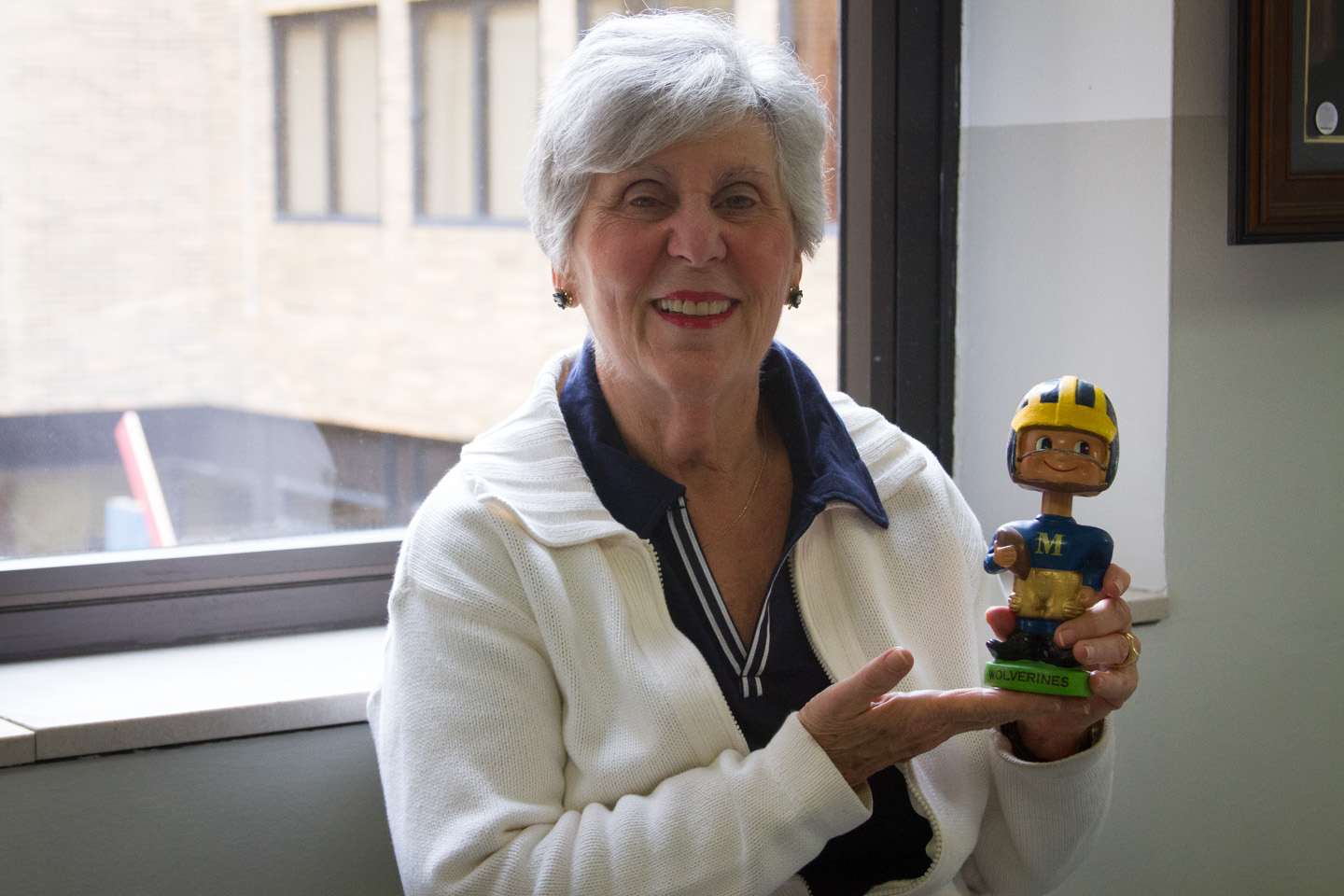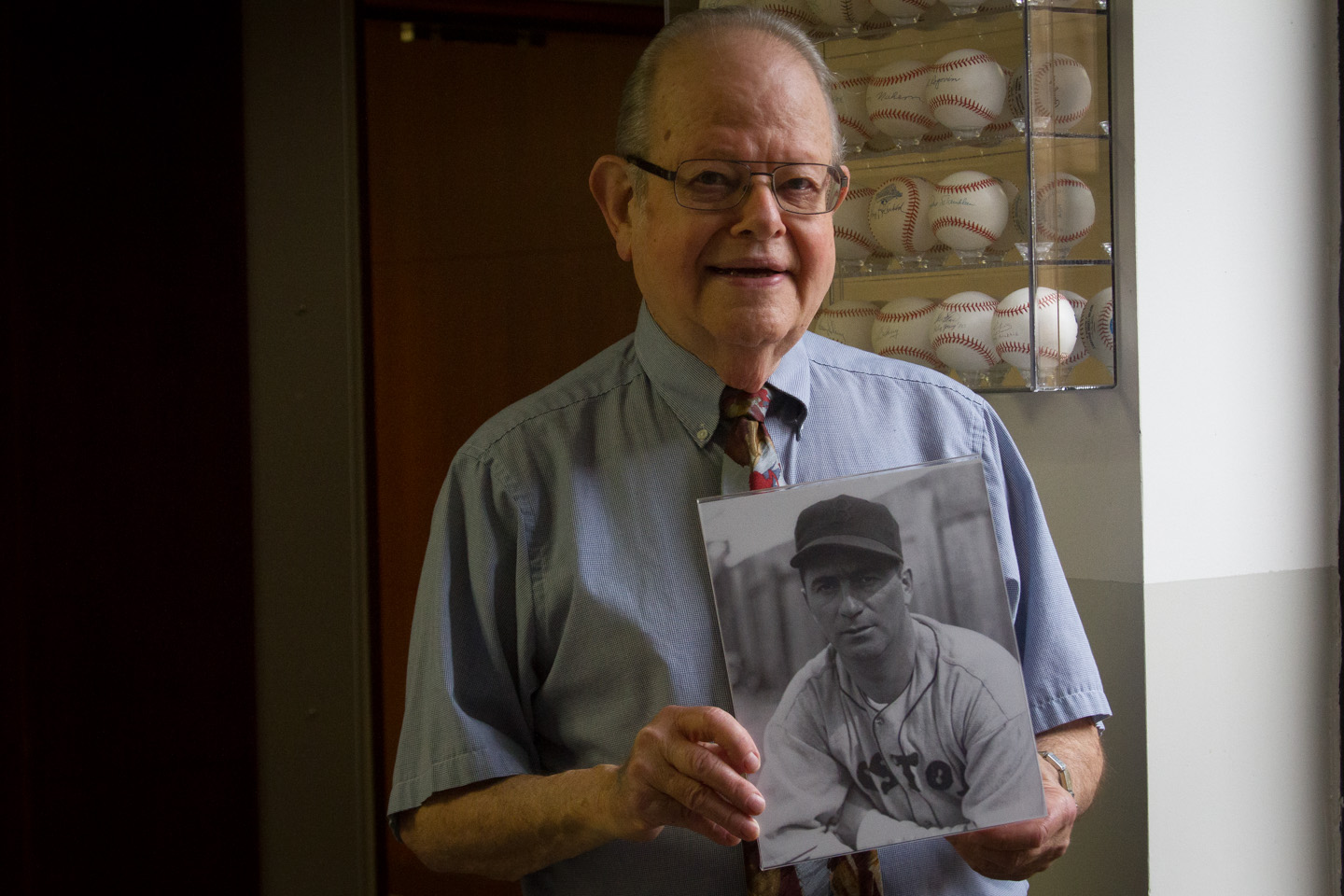What is it about Jews and baseball?
To this day, we celebrate the great Detroit Tigers slugger, Hank Greenberg, and champion his decision to sit out a 1934 World Series game on Yom Kippur.
We still cherish the memory of star pitcher, Sandy Koufax, similarly refusing to play on the Jewish holiday in the 1965 World Series.
What is it about baseball, the American pastime, where Jewish players, even in their scarcity, have managed to play a major league role?
For answers to that central question and for the pure love of sports, visit the JCC in West Bloomfield. There you’ll discover the wonders of the Matthews Sports Exhibit: Jewish Heroes & Other Legends. One of Jewish Detroit’s best-kept treasures — a gift to the community from Dr. Robert (Bob) and Sandy Matthews — the exhibit is like none other in the country, boasting more than 300 photos, paintings, signed balls, bats and other artifacts lovingly collected and displayed.
The unique exhibit at the JCC emphasizes the numerous contributions of Jewish athletes and highlights their sports memorabilia. It represents a small portion of the collection that started with Sandy’s project of organizing Bob’s sports memorabilia in the lower level of their home when they were first married 15 years ago. “We had all this stuff in our house,” explains Sandy. “To me, it was all just names on bats and balls. But for Bob, who grew up loving the sport and knowing the players, each item evoked a memory of a time and place to be treasured.”
What turned Sandy on to collecting was a traveling exhibition that she and Bob visited in St. Petersburg, Florida. As she recalls, “The title of the exhibit was Baseball as America. That struck a strong chord in me. I then started to appreciate what Bob was trying to accomplish. We both have the treasure hunters’ passion and enjoy searching for items that are unique and rarely seen. Over the years, we have visited antique shops, perused catalogues and attended shows and auctions.

With memories as far back as the Tigers’ 1940 World Series year
Bob’s knowledge of sports history is almost encyclopedic. At 80, he can still describe in vivid detail his earliest recollections of baseball, as far back as 1940, listening to Ty Tyson and the Tigers on the radio, while seated in the his uncle’s 1938 Pontiac (a diversion he thoroughly enjoyed with his uncle while his mother and aunt set off on their weekend shopping excursions).
The first baseball game that Bob distinctly recalls as the one that turned him into a lifelong Tigers fan was the final game of the 1945 season. “It was just weeks after World War II ended following the surrender of Japan. The Tigers were in first place, but needed a victory to clinch the pennant. Harry Heilmann was the announcer for the game,” Bob remembers, “The Tigers were trailing the St. Louis Browns 4-3 in the top of the 9th inning. Hank Greenberg (who was my hero and had just returned to the team from the army) came to bat with the bases loaded. And sure enough, Hank hit the grand slam homer that won the pennant propelling the Tigers to the World Series – which they also won.”
What started as a modest collection of vintage Detroit Tigers and Jewish heroes – primarily gathered from the Hank Greenberg era of Bob’s boyhood – has evolved into an impressive exhibit that now feels like a mini visit to the Baseball Hall of Fame. Among Bob’s most prized possessions, there’s a signed copy of Sandy Koufax’s high school year book, a rare set of framed baseball cards depicting 142 Jewish major leaguers and the 1948 first edition of Babe Ruth’s biography, signed by the Babe himself. Also prominently displayed is an original piece of artwork by the renowned sports artist, Ron Lewis. It depicts 26 current and former Jewish major leaguers. In addition to their original autographs, each player has included a personalized inscription to his likeness.
While the central theme of the exhibit remains baseball, the collection also includes a wide variety of items from football (favoring the Wolverines), basketball, hockey and golf. Each season, Tina Tringali, the exhibit’s curator, works with Bob to renew the display with mementos rotated to reflect the current prominent sport.
But wait, there’s more! “Renewing their gift”
Since the opening of the Matthews Sports Exhibit in May 2012, Bob and Sandy have continued to amass and display their personal collection of sports memorabilia in the lower level of their home. Based on an overwhelming response from visitors and at the suggestion of the JCC, they anticipate expanding the exhibit in the near future. Another 20 linear-feet of wall space and cabinetry will be added along the corridor leading to the Fitness Center.
In the weeks ahead, visitors will have the opportunity to view many new photos and artifacts, including a sampling of Sandy’s remarkable collection of handcrafted bobblehead dolls depicting iconic sports figures and sports teams of every stripe.

Why bobblehead dolls? Sandy explains, “Bobbleheads first made their appearance in Major League Baseball parks in the 60’s. Each team had its own customized series of dolls, all handmade of paper-mache and hand-painted in Japan. The teams would order hundreds of them as souvenirs to give to the first fans to arrive at the games. Bobbleheads are now ceramic and produced for other sports and characters, but the original paper-mache dolls are rare and collectible today and have really become a form of cultural art. To me, owning a bobblehead from the 60’s is like touching a friendly little ghost, a spirit that sends you back to a time of serenity and love as we grew up.”
While Sandy lines up the dolls to be displayed, another facet of the new collection in the Matthews Sports Exhibit will reflect Bob’s passion for baseball history, focusing on his all-time Jewish American unsung sports hero: Morris “Moe” Berg.
Moe who? The most famous baseball hero never well known.
Tap Bob on Moe Berg and you get a fascinating biography of a towering figure in history. As Bob observes, “The focus on Jewish baseball stars always has been on Hank Greenberg and Sandy Koufax. In my book, Moe Berg is the greatest ball player most people have never heard of. I think he should be called our newly discovered hero of Jewish baseball. Not for his prowess behind the plate (though he was a pretty good catcher), and not for his academic brilliance (though he graduated Magna Cum Laude from Princeton, attended Columbia Law School, understood Nuclear Physics and was considered a savant). Moe Berg is best known (and only posthumously recognized) for his service as an officer of the O.S.S., the forerunner of the CIA. In life, few knew the ‘real’ Moe – a frontline spy, a covert hero of World War II and a true American patriot.”
Baseball was his cover. A linguist by second nature and fluent in many languages, Moe once inspired a teammate’s observation, “He can speak seven languages, but can’t hit in any of them.”
Moe’s multiple language skills would prove to be an invaluable asset. In 1934, five years before he retired as an active ball player, Berg traveled to Japan on a barnstorming trip, accompanying All-Star major leaguers headed by Babe Ruth, Lou Gehrig and Jimmy Foxx. Under the guise of visiting an ambassador’s daughter at St. Lukes Hospital, the tallest building in Tokyo, he bluffed his way up to the rooftop and, from underneath his kimono, pulled out a Bell and Howell movie camera. He proceeded to pan the entire city skyline, including the harbor, the industrial sections and other potentially strategic targets. It is claimed that those films provided some of the intelligence used in General Jimmy Dolittle’s famous 1942 bombing raid on Tokyo.”
For his many years of meritorious service to our country, Moe Berg was presented the Medal of Freedom by President Truman. The medal currently hangs in a place of honor at the Baseball Hall of Fame in Cooperstown. Also, in recognition of Moe Berg’s significant intelligence contributions, his are the only baseball cards on display in the CIA Museum near Washington, DC. The same cards are displayed in the JCC exhibit.
Recently, ESPN Films presented a TV episode in their 30 for 30 Shorts series, entitled Spyball, documenting many of Moe Berg’s heroic exploits. Moe Berg may have been a .243 hitter, but he batted 1,000 in the hero department.”

Standing with Bob and Sandy at the JCC Exhibit, amidst their gallery of memorabilia and priceless treasures, it’s easy to get caught up in their enthusiasm for the legacy and lore of sports heroes. And that, ultimately, is their purpose in bringing their exhibit to life. The award-winning movie, Jews and Baseball: An American Love Story, adds an informative and compelling dimension to the exhibit. It emphasizes that baseball was a powerful vehicle to help new immigrants in America assimilate into the culture of the country. If you knew baseball, if you could relate to the icons of the sport and if you could play the game, then you shared an essential and uniquely American cultural experience.
“For our generation, this little corner of the JCC has the power to evoke some of the happiest memories of childhood,” says Bob. “But our focus always has been on our younger generation – with the goal to inspire them and to give them a better appreciation of their rich Jewish sports heritage. Because the true joy and satisfaction of owning the collection is sharing it with people who can appreciate it.”
A Footnote: Here for Good
Now retired from an enjoyable practice in orthodontics – making kids and adults smile – and still teaching at the University of Detroit Mercy School of Dentistry, Dr. Robert Matthews has been a longtime and ardent supporter of the community. Beyond the Matthews Sports Exhibit, Bob and Sandy have a keen interest in promoting the quality of eldercare. In 2000, Bob established a private foundation to provide in-home support enabling seniors to age in the comforting surroundings of their own homes. To perpetuate the Matthews’ involvement since then, Bob and Sandy have made a testamentary commitment to Jewish Federation of Metropolitan Detroit’s Centennial Fund. The Matthews Family Foundation In-Home Support Centennial Fund now provides a safety net for future seniors in the community, providing services that include personal care, housekeeping, shopping and other regular assistance for senior families living – and aging well – in Jewish Detroit.
“We have been truly blessed,” says Bob. “Sandy and I are eternally grateful for being a part of the Centennial Fund. Our contribution is our way of saying ‘thank you’ for all the good things we’ve had in our life.”
HERE FOR GOOD: To learn more about the Centennial Fund, please call Stacey Deweese at 248-205-2547 or email deweese@jfmd.org.




